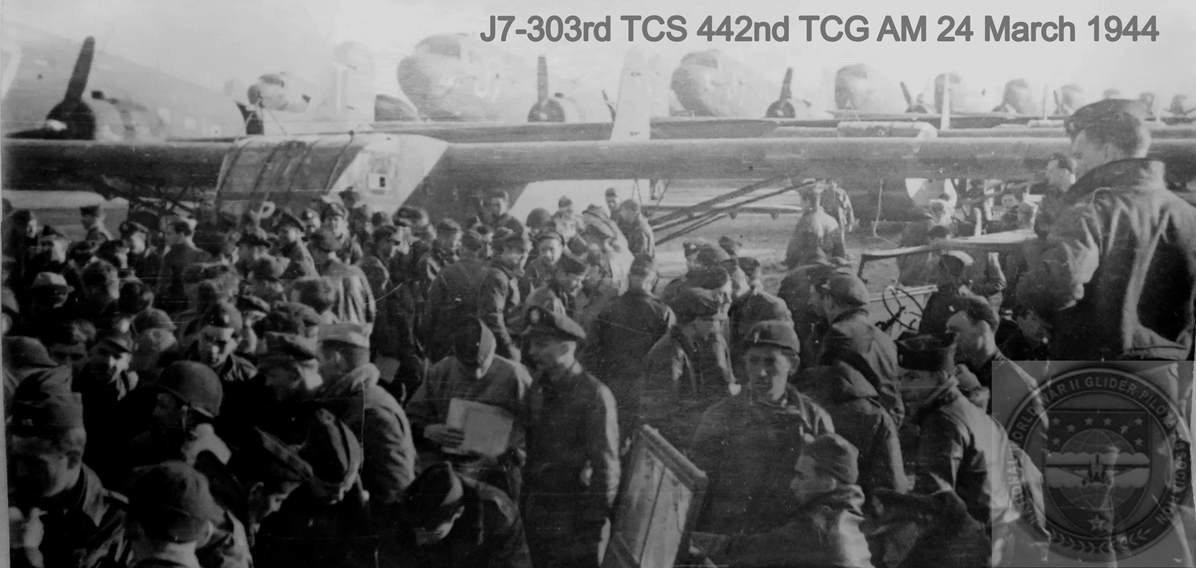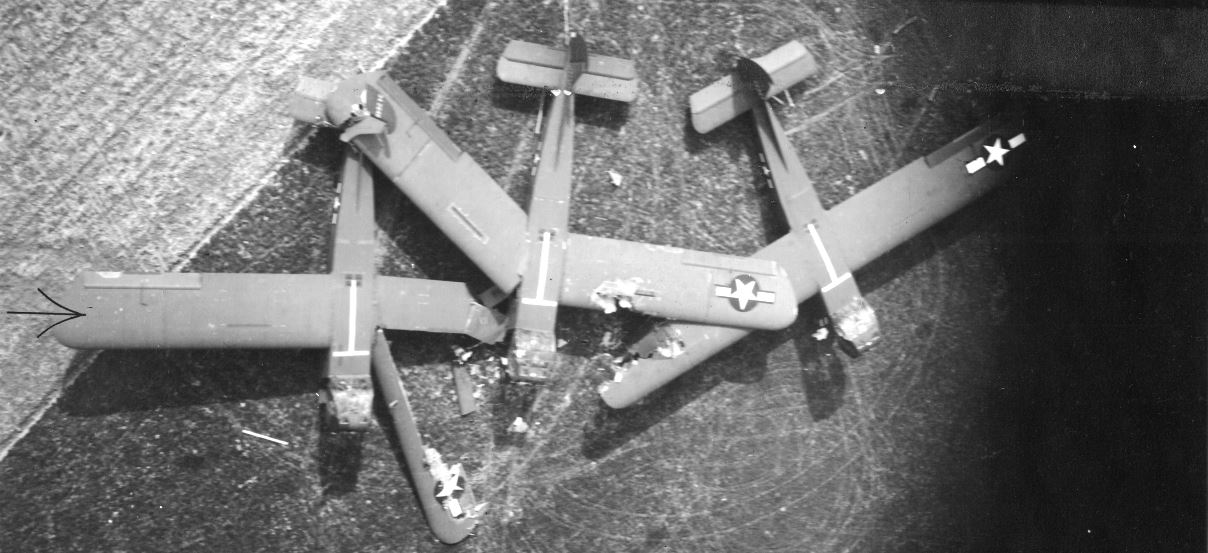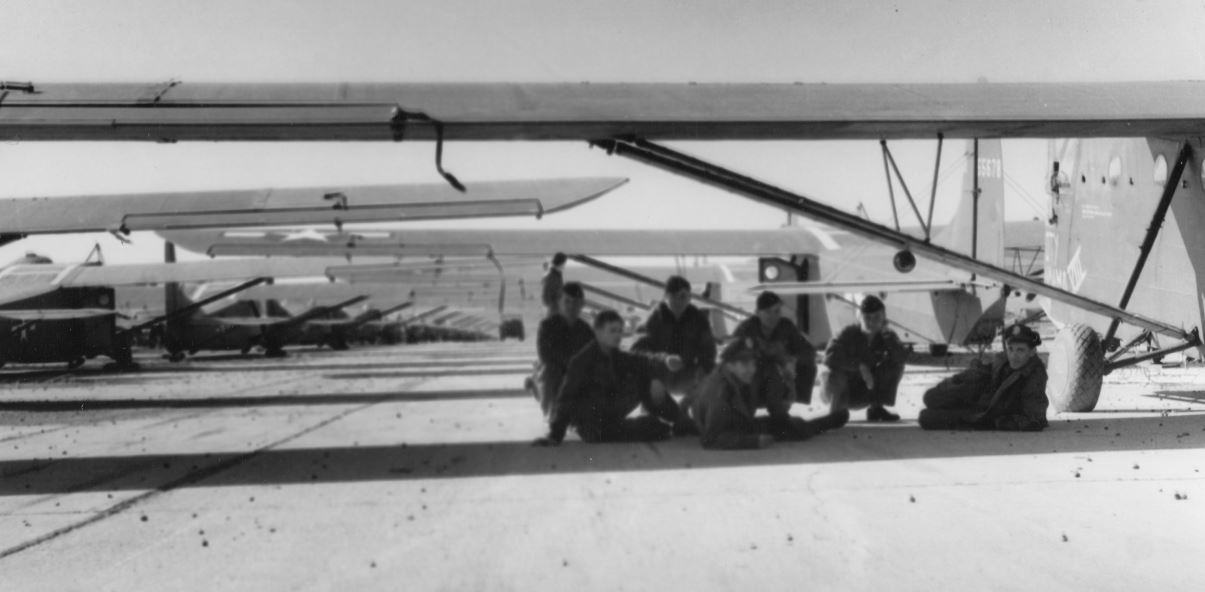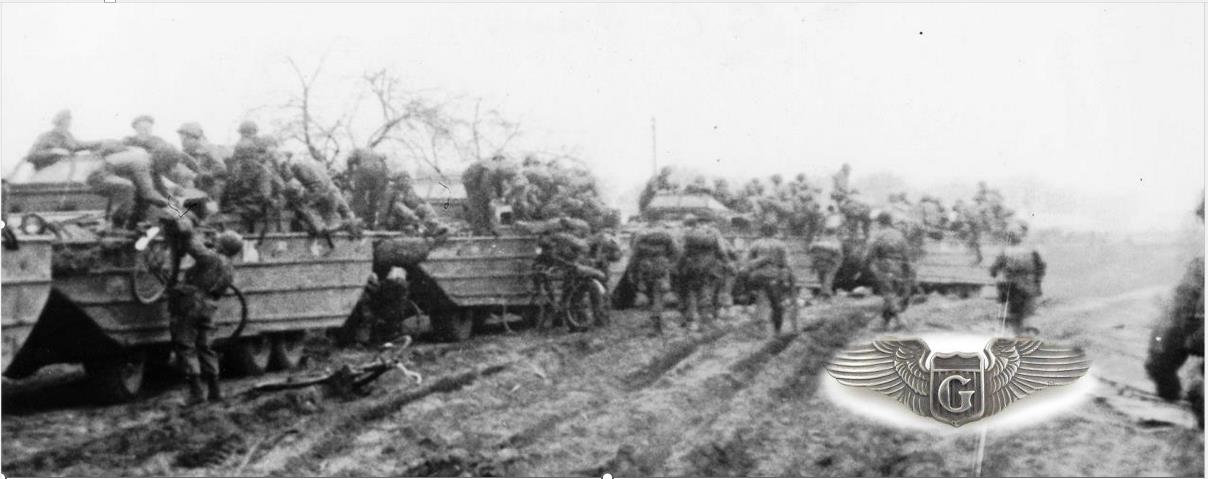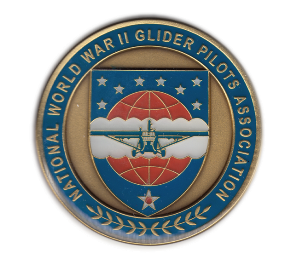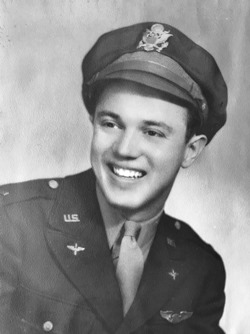
Bill S CHEOLAS June 23, 1924 | POWER GLIDER PILOT
72nd Troop Carrier Squadron (CU), 434th Troop Carrier Group
DS for Rhine Crossing: 86th Troop Carrier Squadron (5K),
437th Troop Carrier Group
|
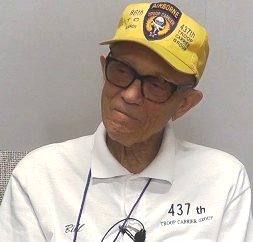 |
Bill was a power glider pilot. He graduated from advanced flight school in the late summer of 1944. At this same time the Ninth Troop Carrier
Command had made the decision to pool the majority of graduating single and twin engine pilots and send them to advanced glider training to learn how to land the CG-4A.
Bill was sent from Randolph Field, Texas, South Plains Army Air Field, where he received his G wings on October 20th 1944. From here, Bill was sent to Europe where he
joined the 72nd Troop Carrier Squadron, 434th Troop Carrier Group, located at Aldermaston, England, as a C-47 pilot. For three months Bill flew as co-pilot on resupply missions.
Shortly before the last airborne operation of the war he was abruptly transferred to the 86th Troop Carrier Squadron 437th Group, who were residing at Coulommiers-Voisins, France.
|
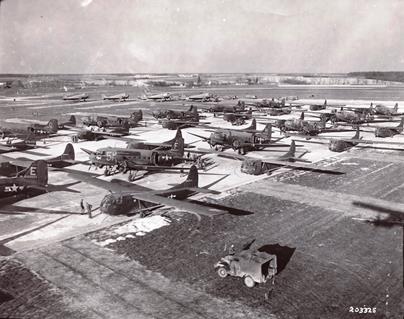
Signal Corps Photo by Pvt. Ralph Forney
Photo taken on 23 March 1945
ALG Coulommiers-Voisins, France
Bill’s glider is behind the glider the truck is facing.
|
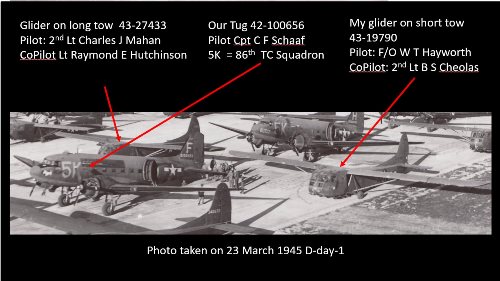 |
|
RHINE CROSSING (Varsity, 24 March 1945):
Serial No.: A-9
CG-4A Glider No. 43-19790 built by General Aircraft. Chalk No. 141.
Pilot: F/O Walt T HAYWORTH; Co-Pilot
|
Tow plane and Crew:
Tug Number: 42100656
Pilot: Capt Cecil F SCHAAF, 0677657
Co-pilot: 1st Lt Alfred H NORRIS, 0806501
Navigator: 1st Lt Edmund G WYDICK, 07?1331
Crew Chief: T/Sgt Lavern D. Dick, 15329483
Radio Op: Sgt Ernest Karlar, 33690403
FORMATION NO 31 |
At 08:30 am on March 24, 1945, Walt and I, at 08:30 am joined our Squadron over the airfield until the formation was complete then left for the invasion of
Germany. We were landing in Landing zone S near Wesel Germany. The trip up to the Rhine River was alright. We encountered flak a little way past the Rhine and it seemed to burst
at approximately our level. Smoke covered the landing zone, which was very good for us. It was very hard to see our landing spot on account of that. Walt and I landed 50 to 60
feet from the Issel Canal after dodging the high power line running along the canal. We were near this water management bridge.
We encountered small arms fire after we cut off and until we landed. It seemed to be coming from a wooded section near where we landed. There were about seven or
eight gliders in the field that we landed in. We got out of the glider and hit the dirt. The airborne got the jeep out and took off. My flight started to get together and
head for the C.P. On the way to the C.P. we guarded prisoners. After we left the prisoners, we headed for the Group C.P. but left suddenly because a tank was coming towards
the C.P. My pilot and other took off towards the squadron C.P. I suddenly found myself alone so I took cover in a ditch. I had no infantry training, and people trying to kill me.
The fighting in both of the American Landing Zones as well as the British Landing Zones farther north, was intense. I knew I was close to our assembly point and near our secondary
defensive position so I hunkered down in the ditch. As the LZ became secure, I realized that I had left my canteen at the base. At a house, not too far from the water
diversion bridge, I found a bottle of wine to quench my thirst.
I was in the field without anyone around me. This was a problem for those of us on detached service and especially those of us who were power pilots.
We didn’t have anyone from our own squadron to watch our backs. I stayed the night in the ditch and heard the Germans attack the Glider Pilots in front of our defense.
I could hear the cannon fire during the fighting but was trying to sleep. I still had my wine bottle and I remember taking a couple swigs.
In the morning someone came to get me. He grabbed my hand and took me off to the POW area. There I watched prisoners until we were evacuated late that afternoon. We walked back to the Rhine River and took "ducks" across the Rhine. I spent the night at Xantan and the next day hitched a ride with a C-47 going to my base from Helmond field.
In my report to the Intelligence officer I mentioned in two sections of the questions that Power Pilots should have ground training before participating as
glider pilots before combat missions.
After returning to the 72nd TCS Bill went on to fly C-47 resupplies missions into Germany and returned with wounded soldiers, and POWs. He also to the discovered concentration
camps to picked up forced laborers (repatriates) and flew them back to their homeland. The return of repatriate’s went on from early April to early June and the IX Troop
Carrier Command named this time period the Flying Pipeline.
TIMELINE
February 1944 – Troop movement of the 434th Troop Carrier Group from USA to Station 467 Aldermaston.
20 October 1944 - Flight Officer Cheolas completed Glider Flight Training. Eleven landing in a GG-4A glider. Nine day landings, one night landing and one check ride.
December 1944- Pilots from the 70th Depot were added to the 434th Roster. They were to begin immediate familiarization of twine engine flying.
20 February 1945- Flight Officer Cheolas with his TC Group moved From 467-Aldermaston to air strip A-80 Mourmelon Le Grand by Special Order Number 32, 15 February 1945. Movement order to take place on 20 February 1945.
March 1945- Sometime between March 10th and March 20th Flight Officer Cheolas was transferred to the 437th stationed at A-58 Coulommiers-Voisins, France
24 March 1945 - Rhine Crossing combat mission, codenamed VARSITY, Cheolas flew first combat mission in a CG-4A glider into LZ - S, Load was components of the 17th Airbone
31 March thru 21 April 1945 - FLYING PIPELINE, flew C-47 resupplies between March 31st thru May delivering much needed gasoline and medical supplies as well as picking up POWs, forced laborers, and wounded soldiers. This operation was considered Troop Carrier’s fines hours.
|
|
RHINE CROSSING
SERIALS
BATTLE OF BURP GUN CORNER OFFICERS
GLIDER MARKINGS
A ONE POINT LANDING
INVASION OF GERMANY
Flight Officer O. Faris
Personal account
Flight Officer Edgar Jella
Personal account
Flight Officer Bill Cheolas
Personal account
17TH AIRBORNE REPORTS Peterson’s Report
1st Lt. Frank Langston's article
NarativeFacts-1st Battalion - 194th GIR Report
NarativeFacts-2nd Battalion - 194th GIR Report
NarativeFacts-3rd Battalion - 194th GIR Report
194th GIR Unit Citation
C-46 VARSITY CATASTROPHE
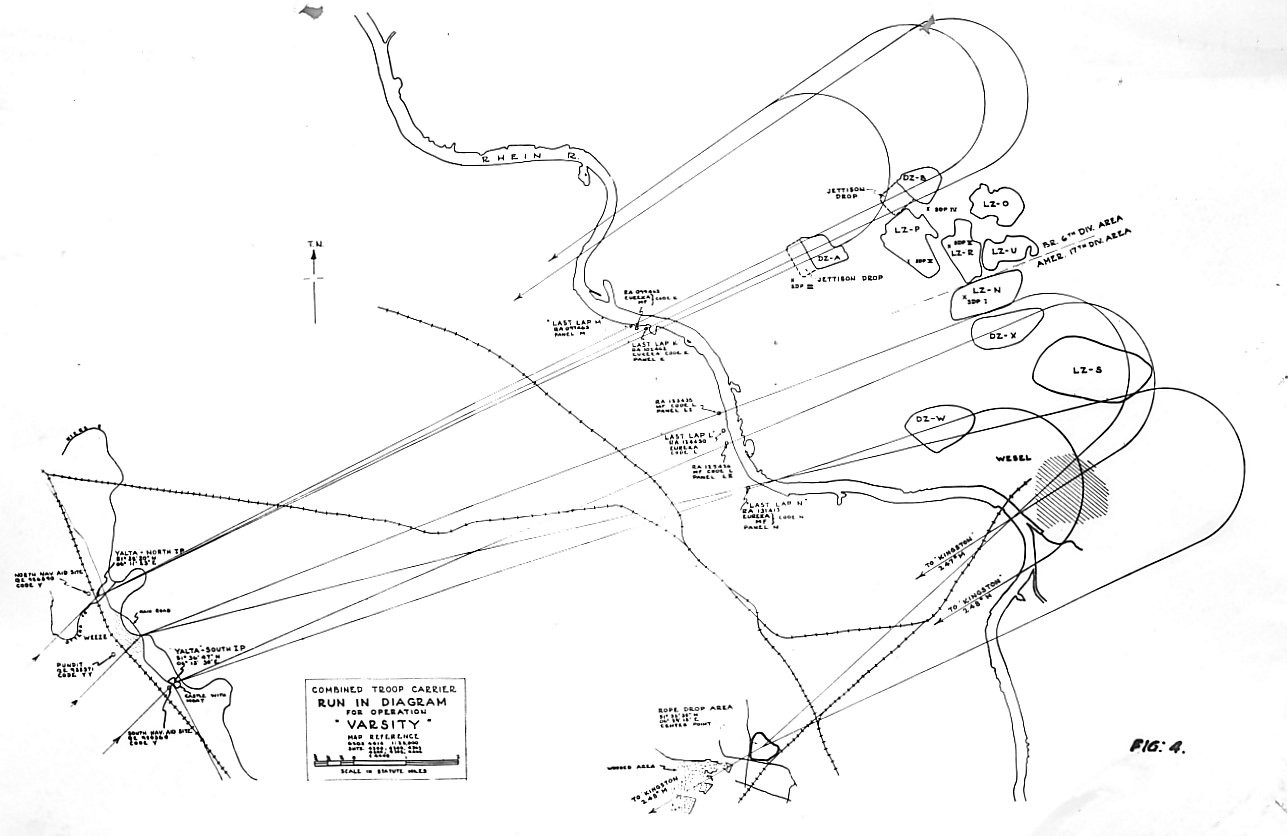 National Archives
93rd Squadron Glider Landings Overlay USAFHRA
94th Squadron Glider Landings Overlay USAFHRA
Brereton's Commendation to the IX TCC
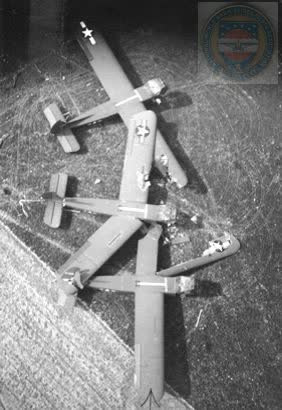
Photo curtesy of the U.S. National Archives
On March 22nd instructions were
received from the Troop Carrier Wings to each Troop Carrier Group to paint an assigned marking, unique to each Group, on the top of all the gliders for identification purposes.
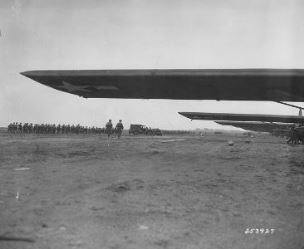
National Archives/NWWIIGPA Collection
Back caption: Troops of the 17th Air-borne Division, load aboard gliders
before the take-off on the air-borne mission of the Rhine River. Germany 3/24/45
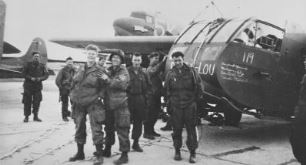
Thomas Pleger Collection/by daughter Marian Klieber
Back caption: Mar 24, 1945 - Pre Take off for Wesel Hop. 437th Troop Carrier Group. Base: Coulemere, France (near Paris) Personnel:
Members 17th Air Borne Glider Inf. --Extra
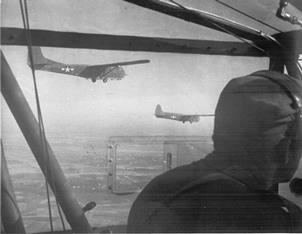
National Archives/NWWIIGPA Collection
Back caption: 1st ALLIED AIRBORNE ARMY
ETO HQ 45 24 MAR 22865-4
CREDIT ... U.S. ARMY SIGNAL CORPS
PHOTOGRAPHER T/4 CLYDE M. PLETCHER
A Double tow glider formation, one of the new techniques used for the first time in an airborne operation, is seen over drop area in vicinity of Wesel,
Germany, during the 1st Allied Airborne Army's air invasion of Germany. Photograph was taken from a glider of the 439th Troop Carrier Group whose load was
the 507th PARA-Infantry Regiment, 17th Airborne Division, 1st Allied Airborne Army.”
[The 507th PIR was transported by the 439th Troop Carrier Group in Serial A-15. These consisted of glider chalk number 105 thru 125.
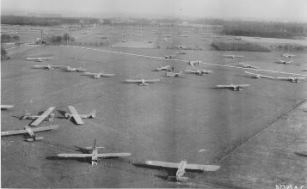 National Archives/NWWIIGPA Collection
Back caption: GLIDERS DOT THE GERMAN LANDSCAPE --- Allied gliders dot the German landscape
behind the German front lines on the Rhine. Parachute troops were dropped, 24 March 1945 in advance of the Rhine-crossing ground troops by
1500 transports and gliders. The 1st Allied Airborne troops landed across the Rhine to support Gen. Montgomery's troops crossing the Rhine.
Almost immediately
after the airborne troops landed, 240 Consolidated B-24 Liberators of the U.S. 8th AF Second Air Division were on the scene to supply them with
vital weapons, food, and medicine.
March 1945.
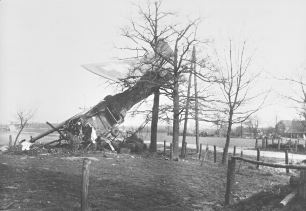
Thomas Pleger Collection/by daughter Marian Klieber
Back caption: Mar 24, 1945 - Some landing tragic. Wesel Germany.
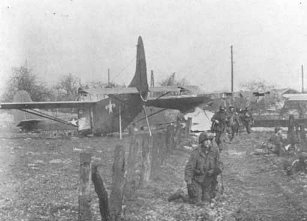
National Archives
This picture was taken at LZ-N near the rail road crossing in that area. The photo was part of a series
of photos in Life Magazine, April 1945 issue pictorial coverage of the Varsity Operation.
|
 National Archives
National Archives








